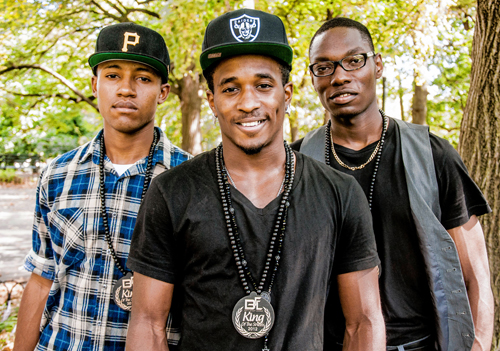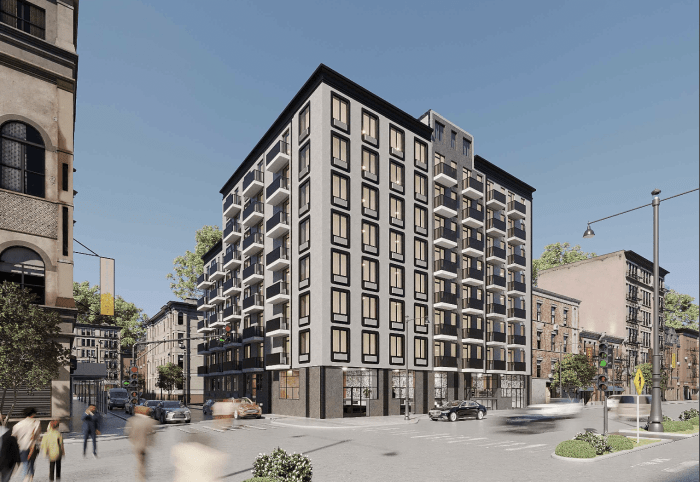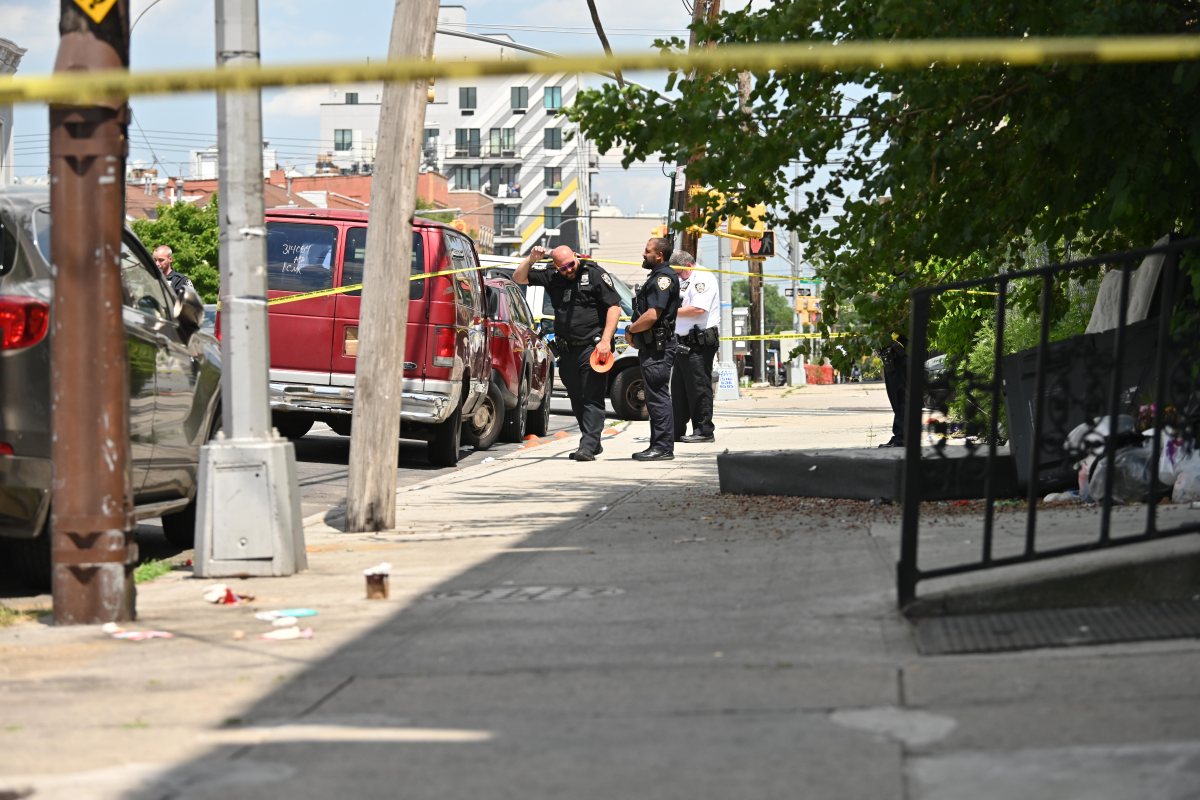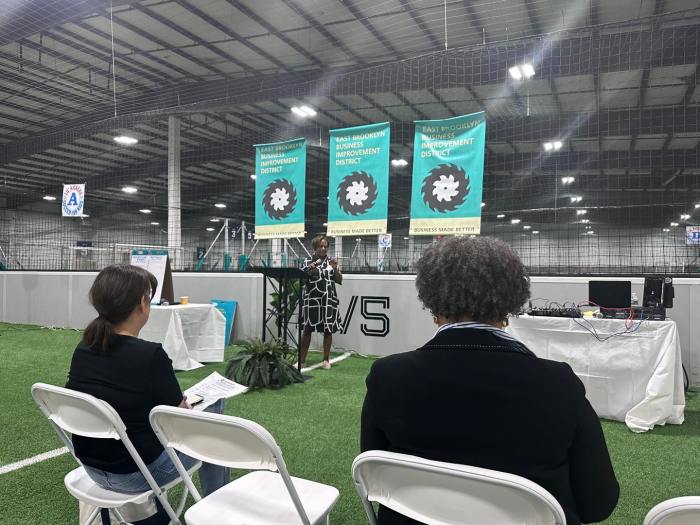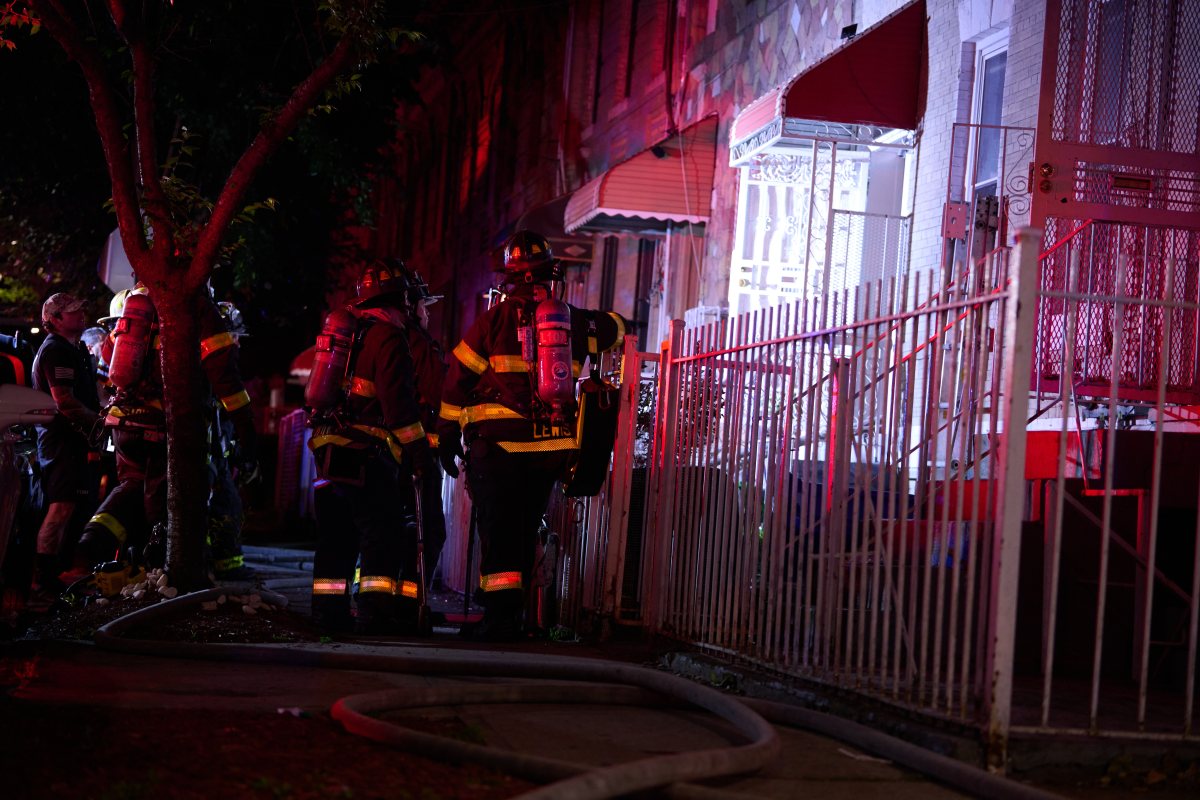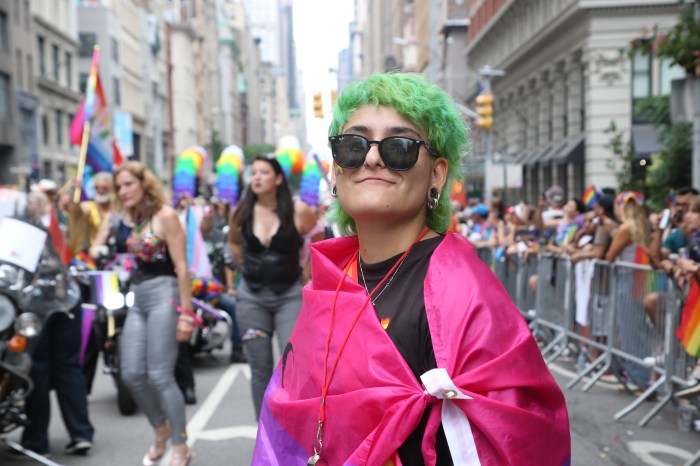An alternative urban dance movement has sprouted from the streets of East New York, and is currently blossoming into the mainstream — having been featured in the Guggenheim in Manhattan, for example — and is on display this month at the DUMBO Arts Festival.
Called Flex, it is characterized by dancers who mime, contort, and pop and lock, breaking out into smooth Michael Jackson-inspired gliding, to do more than just show-off virtuosic talents — they tell stories of young love, gun fights, and even a fanciful visit to the local bodega. They give themselves names much like rappers, and b-boys — names like Scream, Element, or Flizzo, and they aim to deliver the unexpected.
“Flizzo had his nephew dress as a mini-Flizzo — complete with matching tattoos they drew on the kid’s stomach with a Sharpie and he did all the same moves as his uncle,” said Michael Beach Nichols, co-director of a documentary about the movement, “Flex is Kings.”
“And at the end of the dance, the kid opened his mouth and a little zebra finch flew out. I saw that, and I was like, ‘This is crazy!’ ”
This unpredictable dance form also began from an unlikely place — TV.
A now-defunct Brooklyn community access television show was first called “Flex-n-Brooklyn,” which featured rappers, dancers, and any other kind of talent within the community — and most notably, Kareem Baptiste, the creator of an urban dance competition for the title of “King of the Streets,” called BattleFest, where Flex has gained prominence.
The TV show — or the people who got together to watch it — created a community of dancers.
“The culture originally had nothing to do with dancing itself,” said Baptiste. “What’s interesting is that every weekend everyone involved in the show would meet up at the house of the person who ran that show, and they’d cook, and outside, while some people were watching the [show’s] footage, the dancers would battle, and people got really into it. These battles were more of a show then the actual show people were watching inside.”
Soon, the movement grew as competitions at BattleFest drew bigger crowds, and the best of Flex dancers branched out to other parts of the city, like Harlem, where Deidre Schoo — who directed the documentary about the dance — saw Flex for the first time.
“I saw this dancer doing these things that I’d never seen a dancer do before,” she said. “The movement was totally unique, so I went up to him, we started talking, he told me that the movement was called ‘flexing,’ and it was happening in Brooklyn.”
Schoo soon began photographing, (and then filming — with the help of Nichols) the dance events that were typically held in community venues during the day.
The movement has a large following now online, with an active Facebook page for the increasingly popular BattleFests. Anyone interested in Flex can find videos on Youtube, with the documentary “Flex is Kings” garnering even more attention over the past year.
The DUMBO Arts festival will feature some of the most established Flex dancers, including the current “King of the Streets,” Havoc, and others like Dragun, Ozzie Animation, and Pumpkin, in re-opening the borough’s beloved contemporary theater St. Ann’s Warehouse.
Flex at St. Anne’s Warehouse [29 Jay St. between Plymouth and John streets, (718) 488–8588, dumboartsfestival.com]. Sept. 29, 7 pm. Free.
